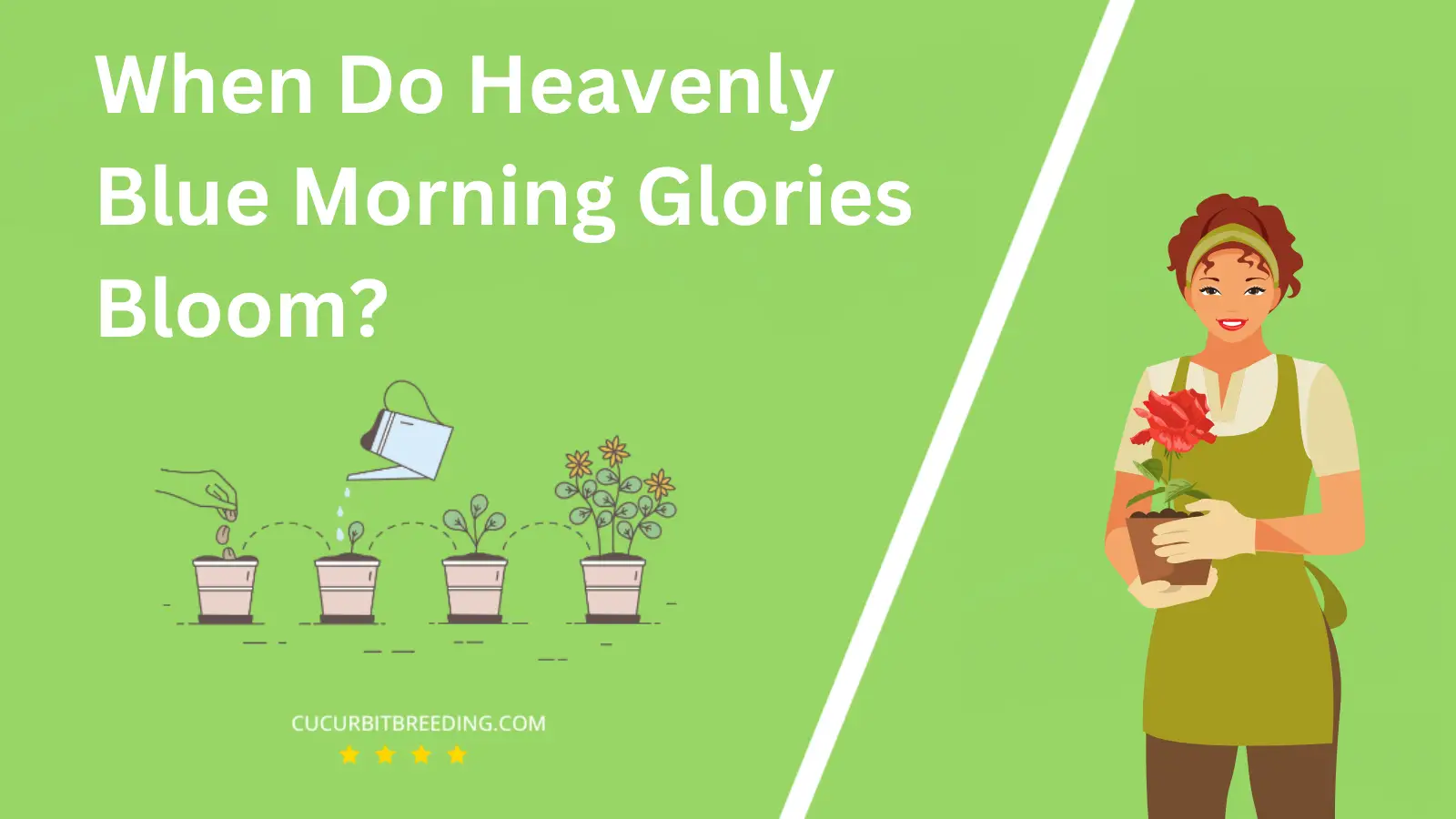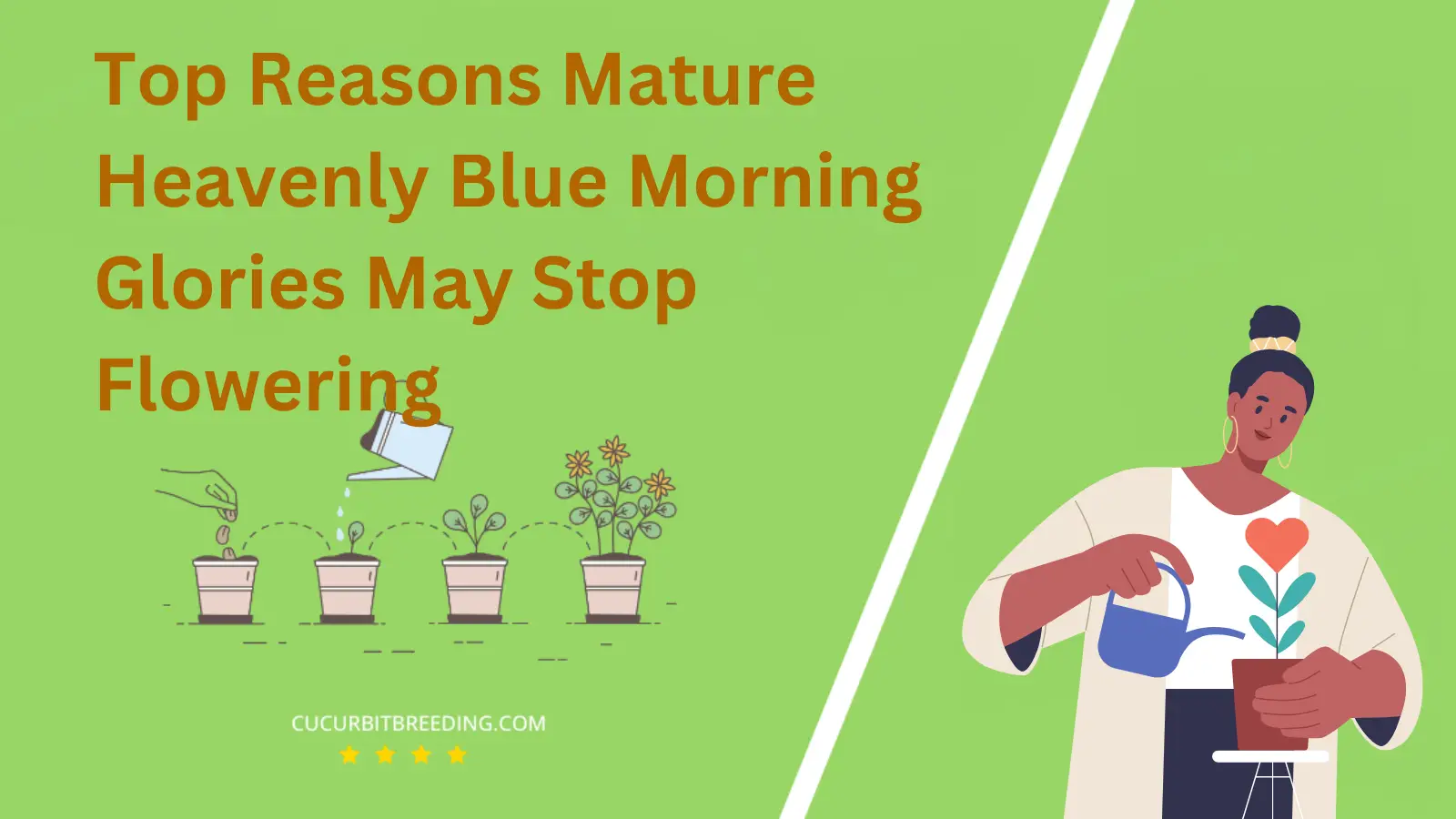
Asking yourself, “When do Heavenly Blue Morning Glories bloom?” A joy to behold, these floral delights are synonymous with the dawn. Their vibrant blue hue and unique shape are a stunning addition to any garden. They have a specific blooming time, which…
…is often a topic of interest among gardening enthusiasts. Let’s delve into the world of Morning Glories and explore their blooming patterns, helping you plan your garden to the tee.
When Do Heavenly Blue Morning Glories Bloom?
The Heavenly Blue Morning Glories typically bloom during the summer months, from early June to late September. However, the exact timing can vary depending on the local climate and growing conditions. They bloom most prolifically in full sun and well-drained soil.
| Stage | Description |
|---|---|
| Germination | Spring (March-May) |
| Growth | Summer (June-August) |
| Blooming | Summer (June to September) |
| Dormancy | Winter (December-February) |
How Long Do Heavenly Blue Morning Glories Bloom?
Heavenly Blue Morning Glories typically bloom from early summer until fall, a period which typically spans from June to October in most climates. However, the exact timing can vary depending on local weather conditions and how they are cared for. This flower species is well-known for its vibrant blue, trumpet-shaped flowers that often are in full bloom in the morning but close in the afternoon.
How Light Affects Heavenly Blue Morning Glories Blooms?
Heavenly Blue Morning Glories, like many plants, bloom in response to light. Specifically, they are triggered by photoperiodism, the biological response to changes in the light-dark cycle.
Because Morning Glories are “short-day” plants, they flower when they experience longer periods of darkness (or short days of less light) as in the late summer and early autumn. They need less than 12 hours of light to trigger blooming.
So, to encourage blooming, it’s important to ensure these plants are situated where they can receive a light-dark cycle that corresponds to their biological needs. Over-exposure to light can delay or even prevent blooming.
Will Heavenly Blue Morning Glories Bloom the First Year You Plant Them?
Yes, Heavenly Blue Morning Glories will bloom in the first year they are planted. This flowering plant typically begins to produce its vibrant blue blossoms within a few months of planting, provided they receive adequate sunlight, water, and soil nutrition.
Will Heavenly Blue Morning Glories Bloom Every Year?
Heavenly Blue Morning Glories are annual plants, meaning they complete their life cycle in a single growing season. However, they can reseed themselves and come back the following year if the conditions are right. Although they might not bloom every year, under the right circumstances, you may see them bloom annually. The most crucial factors for their growth include adequate sunlight, well-drained soil, and moderate watering.

Should I Deadhead Heavenly Blue Morning Glories Blooms?
Yes, you should deadhead Heavenly Blue Morning Glories blooms. Deadheading, or the process of removing faded blooms, helps to promote more flowering. However, if you want your Morning Glories to self-seed and spread naturally, you may choose not to deadhead them.
Top Reasons Mature Heavenly Blue Morning Glories May Stop Flowering

Mature Heavenly Blue Morning Glories may stop flowering for several reasons. Lack of sunlight is a common reason, as these plants require full sun to bloom. If they are in a shaded location, they may not produce flowers.
Another reason could be poor soil conditions. Morning Glories prefer well-drained soil. If the soil is too heavy or waterlogged, this can prevent flowering. Similarly, if the soil lacks essential nutrients, this can also impact flowering.
Over-fertilization is another potential cause. Morning Glories are not heavy feeders, and too much fertilizer can lead to lush foliage at the expense of blooms. It’s also possible that the plant is under stress due to pests, diseases, or extreme weather conditions, which can all inhibit flowering.